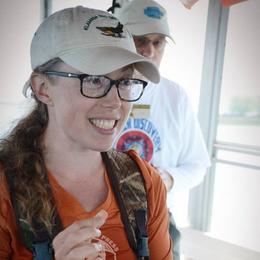In recent years, Wild Turkeys have made appearances across Michigan. It may surprise you to learn that a century ago none of these gobblers could be found anywhere in the state! Colonization, habitat destruction, and unregulated hunting decimated the Michigan Wild Turkey population by the turn of the 20th century.
In the 1950s, Michigan Department of Natural Resources purchased 50 Wild Turkeys from Pennsylvania to release into the open woodlands of Allegan County. Thirty years later, more Wild Turkeys were released across Michigan from Missouri and Iowa, further strengthening and diversifying the population. Thanks to collaborative conservation efforts over the last half-century, there are now 200,000 Wild Turkeys gobbling, and flying across the state!
Conservation success stories like this are possible through years of strong partnerships and community support. National Wild Turkey Federation (NWTF) works with Michigan DNR, private landowners, and local NWTF chapters, to restore and enhance habitat that Wild Turkeys need to thrive. NWTF is also a MI Birds partner and has co-hosted immersive birding field trips at oak-savannah restoration sites, engaging the birding community in Wild Turkey conservation.
Wild Turkeys rely on open woodlands year-round with interspersed clearings. Here in Michigan, they like openings in oak-hickory forests, with red oak, beech, cherry, and white ash trees. These open woodland habitats also support some of our favorite songbirds like the Blue-winged Warbler and Eastern Towhee.
Learn how you can help support Wild Turkeys:
-
Support oak-savannah habitat restoration by becoming a steward of your public lands.
-
Establish a food plot on your property during harsh winter months when food is scarce.
-
Participate in Winter Wild Turkey counts each January, and Wild Turkey Brood Surveys each Summer and submit your observations to the DNR to help track populations.
-
Visit your local Turkey Tract or State Wildlife Area, many of which double as Audubon Important Bird Areas. Remember to plan your trip safely during hunting season.
-
Next year, consider hunting for your Thanksgiving Turkey. Hunting license fees and excise taxes on hunting equipment support the continued conservation of wild turkey populations. Learn more at Michigan.gov/Turkey.
ABOUT MI BIRDS
MI Birds is a public outreach and education program presented by Audubon Great Lakes and the Michigan Department of Natural Resources that works to build and bring together wildlife enthusiasts across the state to engage with and conserve Michigan's birds, wildlife, and public lands.





